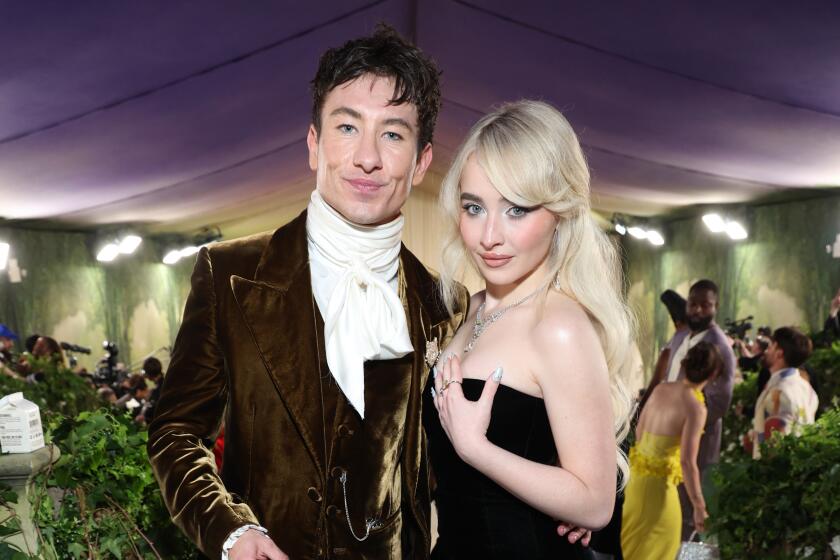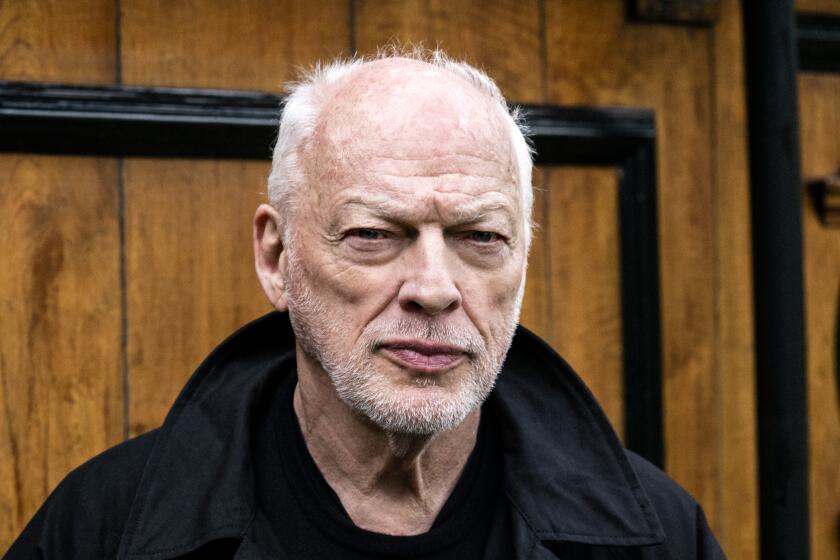Suddenly, Jazz Seems to Be Reawakening in Laid-Back San Diego : Fusion Adds New Element, but to Young Fans Even the Traditional Jams Now Sound New and Different
- Share via
SAN DIEGO — Circling slowly above the noisy Friday night crowd at Croce’s Restaurant Bar and Jazz Cave, ceiling fans shredded the cigarette smoke as the Joe Marillo Quartet wailed another piece.
Nearing the end of the first set, Marillo arched his back and blew the heart out of John Coltrane’s “Love Supreme,” piercing the din and giving jazz fan Ken Harrison the kind of music he came to hear.
“I’ve been following Joe Marillo about 20 years,” Harrison said. “He’s so consistent. When they came in tonight, from the very first tune they were cooking.”
Jazz itself is cooking these days, bubbling up to the surface of the San Diego entertainment scene and offering a variety of musical flavors to fans old and new. With its characteristic exuberance, this purely American art form is swinging out of the smoky dives and into hotels and restaurants that a few years ago would have seemed too nice for jazz.
Often criticized as enigmatic, undefinable and iconoclastic, jazz has suddenly become respectable, if not yet de rigueur, in an area where the urge to get “laid back” usually requires a lawn chair and where sizzle is something more often performed on a barbecue grill.
“I think we have a new generation of people who think this music is new,” said jazz bassist Gunnar Biggs, who believes that people are attracted to jazz’s lack of electronic gimmickry. “I think people find the human acoustic quality appealing. You can’t hit a key and have a drum set come in. You have to have someone actually playing the bass.”
“There’s never been a time for jazz like now,” said Billy Riley, managing director of the Horton Grand Hotel. “For so long, you wondered if anyone was interested at all. But now people are coming downtown for jazz.”
The Horton Grand’s elegant Palace Bar has become a jazz listening room, as has the Bella Via restaurant’s bar in Cardiff, and Elario’s atop the Summer House Inn in La Jolla.
Even the staid San Diego Museum of Art in Balboa Park has begun supporting jazz, offering visitors the traditional sounds of the Bob Hamilton Trio on Sunday afternoons in its outdoor Sculpture Garden Cafe. The museum also presents a monthly jazz concert featuring musicians such as alto saxophonist Charles McPherson, who lives in San Diego but plays around the world.
In the Gaslamp Quarter, traditional bop, swing or boogie-woogie are wailed nightly amid a noisy, packed throng at Croce’s--an extraordinary scene that makes you wonder if you’re really in San Diego.
The popularity of traditional jazz seems tied to the advent of rock-oriented contemporary jazz. Contemporary jazz, or fusion if it blends rock, soul or Latin music with traditional jazz, has become a huge local favorite.
Although in San Diego fusion is often referred to as jazz, in New York City, fusion is called fusion, said local flutist Holly Hofmann. The blurring of those lines is significant. Most of the selections on the all-jazz formatted KIFM are contemporary music, a mellower rock-influenced sound usually played on electronic instruments, including synthesizers.
“There’s more and more of it here,” said Mary Sorrentino, vice president and program manager for the station. “And I think people are recognizing this is just not a passing fancy. There’s some permanence here, and it’s going to continue to be popular.”
The future of jazz is linked to a colorful if sometimes rough-and-tumble past. It emerged in New Orleans at the turn of the century, played predominantly by black musicians, and spread quickly across the country. Because it was played in New Orleans’ infamous brothels, and later in Prohibition speak-easies in Chicago and Kansas City, it was deemed lascivious and lacking in refinement by many. The later involvement of a number of prominent jazz artists with drugs added to the poor image.
Jazz was also regarded as black music, at a time when much of the country was institutionally segregated. A significant breakthrough came in the mid-1930s when Benny Goodman created the first integrated band to tour the country.
The history of jazz in San Diego is almost as old as jazz itself. It came here not many years after it wound north up the Mississippi River from New Orleans in the mid-1920s.
Legendary figures such as Ferdinand (Jelly Roll) Morton played San Diego and Tijuana in the 1930s. In the mid-1920s, the Harry Robinson band, playing something like jazz, alternated between the Huntington Hotel in Pasadena and the Hotel del Coronado.
The Glenn Miller, Jimmy Dorsey, Billy Rose and Xavier Cugat orchestras, along with Red Nichols and his Five Pennies, played ballroom jazz to large conventions at the Hotel Del during the 1930s.
As a bustling Navy port, San Diego swelled with sailors on leave who became a source of support for jazz musicians during World War II and the following decade. Some of the best jazz players worked a cluster of honky-tonks near C Street and today’s City Hall, according to bassist Preston Coleman.
At night spots like the Club Royal, situated where the Westgate Hotel now stands, an attractive woman fronted the band, singing risque songs to the delight of the club’s clientele, mostly sailors and commercial fishermen.
Coleman, who today plays with the group Tobacco Road, recalled his initiation to the local club scene in 1946.
“The first night, our singer was fired, (given) a week’s pay, and had to go back to Chicago,” Coleman said. “She was too fat. You had to be a very good-looking woman.”
Thirty years ago, musicians such as pianist Mike Wofford, sax man Gary LeFebvre, drummer Johnny Guerin and the late trumpet player Don Sleet jammed at the Pour House and the Beacon Inn before their talent took them out of San Diego and to the clubs and recording studios of Los Angeles.
Today, Wofford and LeFebvre have returned, joining an impressive array of musicians who make San Diego their home. Besides applying his world-class technique to the keyboard at a variety of venues, Wofford is the behind-the-scenes force who has used his connections to transform the Horton Grand’s Palace Bar into the most elegant jazz listening room in town.
Not every jazz musician agrees that jazz is gaining a wider audience in San Diego. Charles McPherson, one of the nation’s premier be-bop alto sax players, lives in La Jolla, but plays most of his performance dates out of town.
“There are a few dedicated jazz fans . . . who will come out in San Diego,” McPherson said. “I would not classify it as a scene . There’s not enough jazz clubs. It’s one step back and one step forward.”
McPherson acknowledged that mainstream jazz is being offered in more clubs, but pointed out that former jazz haunts The Crossroads, the Blue Parrot and Our Place have all folded in recent years.
“It’s still not enough of a local jazz scene,” he said.
However, when compared to traditional jazz clubs, the number of locations that offer contemporary jazz has taken off like a sax riff by Charlie Parker. More than 60 clubs are presenting jazz this month in San Diego, most of it contemporary jazz. The five-year success of the Concerts by the Bay series at Humphrey’s is based chiefly on the popular appeal of contemporary jazz, said Humphrey’s promoter Kenny Weissberg.
Traditional jazz musicians are cashing in on contemporary’s popularity.
“Because jazz has taken on such a broad definition, a lot of us are working,” said flutist Hofmann. “We (she and guitarist, pianist and vocalist Ronn Satterfield) do all the so-called jazz idioms and do them well. We can do fusion as well as straight-ahead jazz, everything from Charlie Parker and Duke Ellington to David Sanborn.”
The growth of jazz has spawned a newspaper dedicated to chronicling the jazz scene. Jude Hibler, publisher of the embryonic Jazz Link, plans to cover all forms of jazz in the monthly publication. She said it was the quality of the musicians playing traditional jazz that caught her attention last year.
She heard Wofford at the Bella Via one night and came away wondering why more people weren’t aware of the man that many other musicians regard as one of the finest jazz pianists in the country. Hibler began distributing a flier listing Wofford’s performance dates. She later began adding other performers’ schedules to it.
Last month, Hibler quit her job as a secretary to devote herself full time to putting out her 12-page jazz newspaper. Ten thousand copies of the first issue, with a lead feature story on alto saxman Charles McPherson, came off the press last week. They are being distributed primarily through jazz clubs and record stores, Hibler said.
Bassist Gunnar Biggs believes traditional jazz may be finding “a new generation” of fans who think of it as new. He remembered a comment made by a young woman who had just heard his combo’s version of “What’s New.”
“She said, ‘This band is really good,’ ” Biggs said. “ ‘They play Linda Ronstadt!’ ”
“What’s New,” one of several standards Ronstadt recorded with Nelson Riddle a few years ago, was written by San Diego jazz musician Bob Haggart half a century ago.
More to Read
The biggest entertainment stories
Get our big stories about Hollywood, film, television, music, arts, culture and more right in your inbox as soon as they publish.
You may occasionally receive promotional content from the Los Angeles Times.










